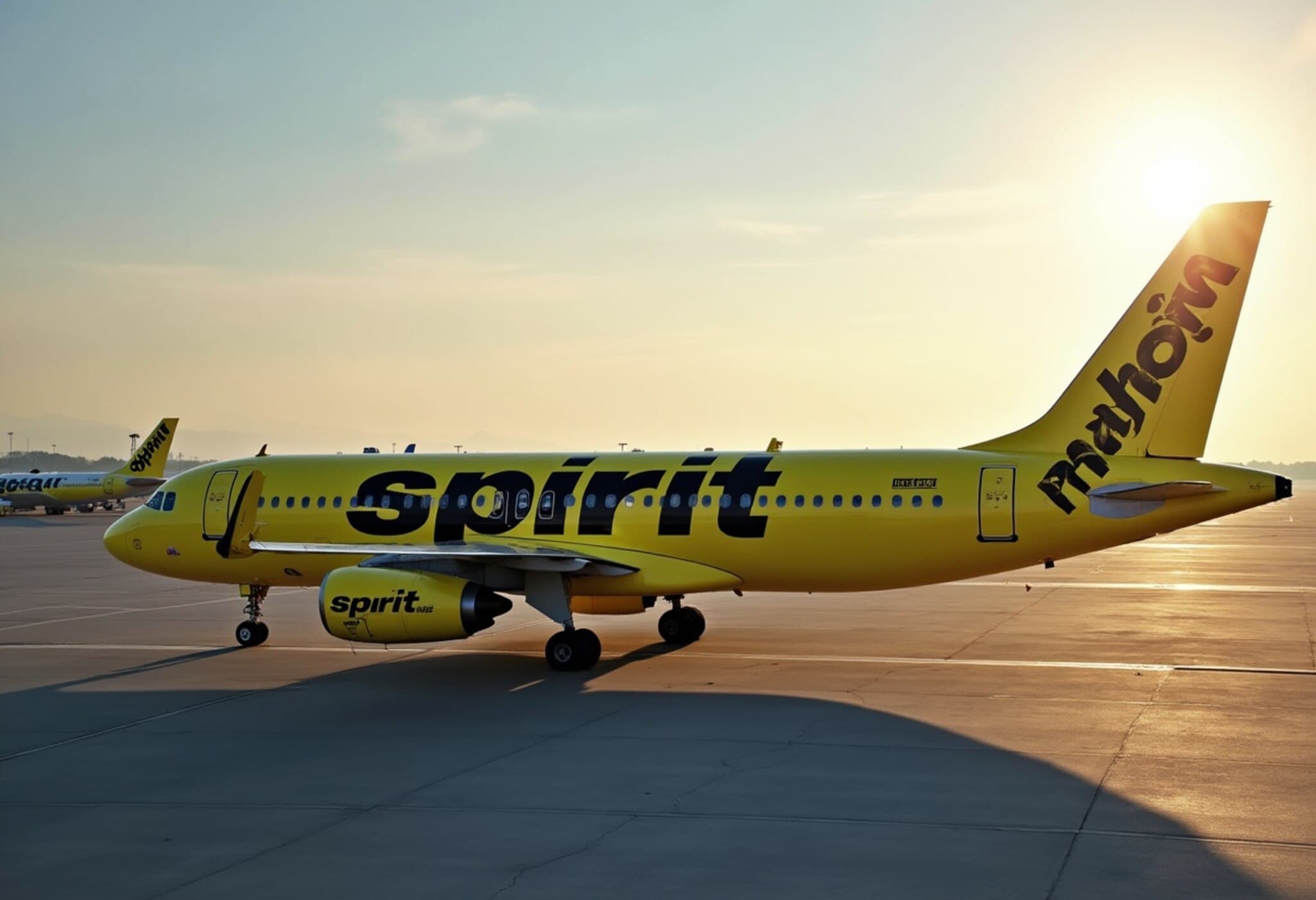Spirit Airlines Issues Alarming Survival Warning Five Months Post-Bankruptcy
In a stark update to investors, Spirit Airlines has signaled serious doubts about its ability to continue operating without securing additional capital, just five months after emerging from bankruptcy. The low-cost carrier, known for its distinctive bright-yellow planes and budget-friendly fares, is grappling with a tumultuous market environment that has greatly impacted its financial stability.
Financial Strain Despite Restructuring Efforts
Following a significant debt reduction during its bankruptcy restructuring, Spirit Airlines has been actively trying to reinvent itself to lure travelers and streamline operations. These efforts include introducing more upscale offerings such as premium economy seating and aggressively trimming operational costs. Additionally, the company recently announced plans to reduce its pilot workforce by approximately 270 this fall, an indication of ongoing internal adjustments to stabilize its cost structure.
Adverse Market Conditions Undermine Recovery
Spirit’s quarterly earnings report sheds light on persistent headwinds, chiefly an oversupply of domestic flights and softer-than-expected demand for leisure travel within the United States. This has contributed to a challenging pricing landscape, which the airline admits has eroded revenue prospects and tightened margins.
“The Company has continued to be affected by adverse market conditions, including elevated domestic capacity and continued weak demand for domestic leisure travel in the second quarter of 2025,” the company disclosed in its filing.
Liquidity Concerns and Potential Asset Sales
Compounding these struggles, Spirit’s financial performance has lagged behind the requirements set by creditor agreements. The airline’s management has expressed significant uncertainty regarding their ability to comply with liquidity covenants over the next 12 months. Without securing further funding, the company risks defaults that could imperil its operations.
To bolster its cash flow, Spirit is exploring the sale of non-core assets, including aircraft, real estate holdings, and airport gate leases, which may help alleviate financial pressures but also signal underlying vulnerability in its business model.
“Management has concluded there is substantial doubt as to the Company’s ability to continue as a going concern within 12 months,” according to the quarterly report.
Background: From Budget Pioneer to Bankruptcy
Spirit Airlines, a trailblazer in the no-frills airline market in the U.S., filed for bankruptcy protection in early 2025 – the first major U.S. airline to do so since Delta’s restructuring in 2011. The bankruptcy was driven by a perfect storm of rising fuel costs, a shift in consumer preferences toward more premium travel experiences, and an engine recall that grounded part of its fleet, significantly reducing capacity and inflating costs.
Industry Perspective: Challenges Facing Budget Airlines in 2025
Spirit’s struggles underscore a broader trend threatening budget carriers nationwide. Despite their appeal during economic downturns, these airlines must adapt swiftly to fluctuating consumer expectations and volatile operational challenges. The oversaturation of domestic flights post-pandemic has diluted pricing power, while newer competitors with hybrid business models are capturing market share.
Economic analysts suggest that Spirit’s attempts to upscale offerings indicate a strategic pivot necessary to attract higher-yield passengers. However, this risks alienating its core customer base accustomed to ultra-low fares.
Looking Ahead: Critical Questions for Spirit’s Future
- Can Spirit successfully raise the capital it needs without diluting shareholder value or incurring unsustainable debt?
- Will the company’s shift toward premium offerings resonate with consumers in a competitive market?
- How will potential asset sales impact Spirit’s operational capabilities and long-term growth prospects?
Expert Insight
Industry experts note that Spirit’s warning highlights a fragile aviation recovery amid broader economic uncertainties. In the U.S., airline liquidity remains a critical factor as consumer travel patterns evolve. There is a fine balance between cost-cutting and maintaining sufficient service quality to retain customers.
Editor's Note
Spirit Airlines’ ongoing financial hurdles serve as a bellwether for the challenges facing low-cost carriers in 2025. As the company maneuvers through a difficult market, its fate will depend on strategic capital management and successfully engaging a shifting consumer base. Investors and travelers alike should watch closely whether Spirit’s bold moves can restore confidence or if it signals deeper systemic issues within the budget airline sector.











